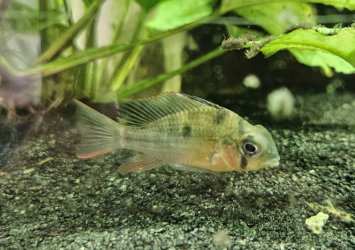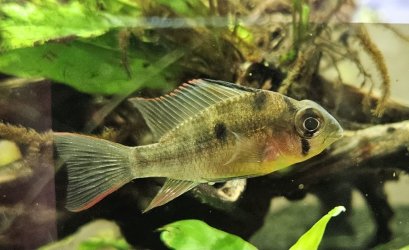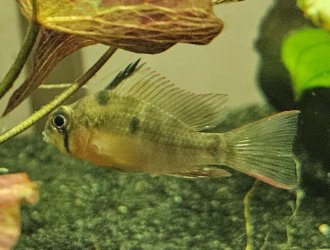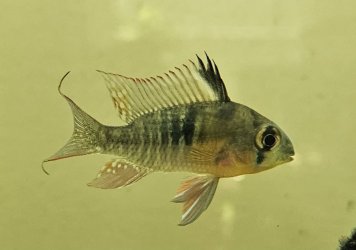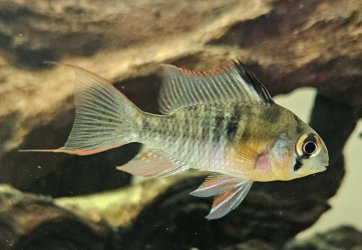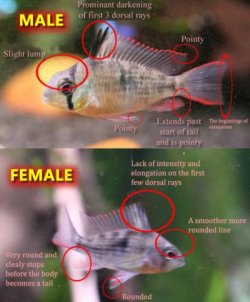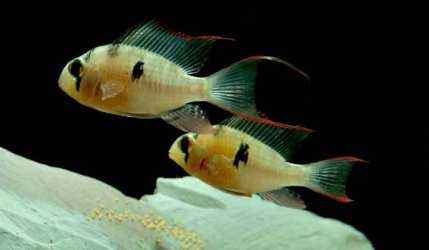Bosemani_vh
New Member
Hello! I'm relatively new to keeping Bolivian Rams. I've had two Rams for ~6 months or so.
When I first adopted these Rams, my intention was to try to bring home a pair with the intention of getting another couple of pairs. Or more females than males, but I'd wanted to do my research first on the best combos. My LFS thought that was a good plan as well, though I usually take any LFS advice with a healthy dose of skepticism.
Problem: My two Rams seem to fight pretty consistently. I'd read that this is expected at first regardless of sex combination, as the Rams will need to establish territorial dominance. It has reduce over time, but it's still nearly a daily occurrence that the aggressor Ram bullies the other Ram to a small degree. The aggression level has reduce though.
Question 1: It’s my understanding that Bolivan Rams are best kept in groups of 6, and I know that with ither fish, aggressive behavior is reduced in larger school sizes.
Would it make sense to add more Bolivan Rams to increase the school size to reduce aggressive behaviors?
If yes, how do you accomplish this safely? I've read that adding Bolivan Rams to an already established tanked can cause males to kill any intruders regardless of whether they are male or female.
Question 2: How do you consistently sex Bolivian Rams? I've read numerous articles about sexing Rams, however I'm convinced that every Bolivan Ram that I see is a male. I'll attach a couple of photos of the two Rams that I have. I think I have one male and one female though.
Can anyone help sex these Bolvian Rams?
Once sexed, I would greatly appreciate any advice on managing aggression between these two rams!
Additional Info: the tank size is 150 gal and is understocked.
When I first adopted these Rams, my intention was to try to bring home a pair with the intention of getting another couple of pairs. Or more females than males, but I'd wanted to do my research first on the best combos. My LFS thought that was a good plan as well, though I usually take any LFS advice with a healthy dose of skepticism.
Problem: My two Rams seem to fight pretty consistently. I'd read that this is expected at first regardless of sex combination, as the Rams will need to establish territorial dominance. It has reduce over time, but it's still nearly a daily occurrence that the aggressor Ram bullies the other Ram to a small degree. The aggression level has reduce though.
Question 1: It’s my understanding that Bolivan Rams are best kept in groups of 6, and I know that with ither fish, aggressive behavior is reduced in larger school sizes.
Would it make sense to add more Bolivan Rams to increase the school size to reduce aggressive behaviors?
If yes, how do you accomplish this safely? I've read that adding Bolivan Rams to an already established tanked can cause males to kill any intruders regardless of whether they are male or female.
Question 2: How do you consistently sex Bolivian Rams? I've read numerous articles about sexing Rams, however I'm convinced that every Bolivan Ram that I see is a male. I'll attach a couple of photos of the two Rams that I have. I think I have one male and one female though.
Can anyone help sex these Bolvian Rams?
Once sexed, I would greatly appreciate any advice on managing aggression between these two rams!
Additional Info: the tank size is 150 gal and is understocked.

